John Cox was born on 16th February 1836 in Thurlby, Lincolnshire, the second child of John and Sarah Cox. He was baptised at St Germain’s Church on 18th March 1836.
In 1841 John was living at Belvoir Road, Bottesford, Leicestershire, with his parents. John recorded in the family Bible that he moved with his parents to Derbyshire in 1850 when his father John became a bailiff to Lowes Farm at Swarkestone. However, they appear to have moved a few years before 1850 since John’s younger brother Charles was baptised at Swarkestone on 31st December 1848. John also recorded that he served his apprenticeship as a blacksmith with Bentley’s at Swarkestone and returned to Market Deeping, Lincolnshire, to work as an improver. It was here that he learnt to ring church bells. By 1861 he returned to Derbyshire and, working as a smith, he was living at Barrow upon Trent with his parents, his brother Thomas, and his sister Charlotte.
Banns of marriage were read at St Wilfred’s Church, Barrow upon Trent, on Sunday 5th, 12th and 19th May 1861 between ‘John Cox of this parish and Sarah Rollin of the parish of Caunton’. They were married on Whit Monday, 20th May 1861, at St Andrew’s Church, Caunton.

Sarah Rollin was born in Treswell, Nottinghamshire, in March 1842, the daughter of William and Susannah Rollin. Together with her twin sister Susannah, she was baptised at St John the Baptist’s Church at Treswell in 1842. Sarah and Susannah’s younger twin sisters were Maria and Martha, born in 1844. Sarah had friends in the Bristow family who had land at Caunton and at Twyford Hall, and they may have met through this connection. However, in April 1861, Sarah was employed as a house maid at Lowes Farm, Swarkestone, where John’s father was a bailiff, so they may have met there.

After their marriage, John and Sarah moved to Newton Solney, living at the Smithy where John worked as a blacksmith. Their first daughter, Sarah Ann, was baptised on 23rd March 1862 at St Mary’s Church, Newton Solney, and their first son Herbert, born in 1863, was baptised on 24th January 1864 at the same church. Three more daughters followed: Hannah Maria born in 1865, Elizabeth in 1867, and Florence Mary in 1869; and all were baptised at St Mary’s Church, Newton Solney. Their sixth child Alice Eliza was baptised on 30th April 1871, but died in her second year. She was buried at Newton Solney on 10th June 1872.
Their next two children were Mary Ann, born in May 1873 and Gertrude Alice, born in January 1875. Both children were baptised at St Mary’s Church and their baptism records show that John was still working as a blacksmith and living at Newton Solney at this time.
Between 1875 and 1877 the family moved to the Smithy in the hamlet of Twyford, Derbyshire, where John replaced George Towle as the blacksmith. Before they moved, Sarah had work cleaning a house at Twyford, and a record in the family Bible notes that when she walked there she carried her daughter Gertrude in her arms, while her daughter Elizabeth walked with her.
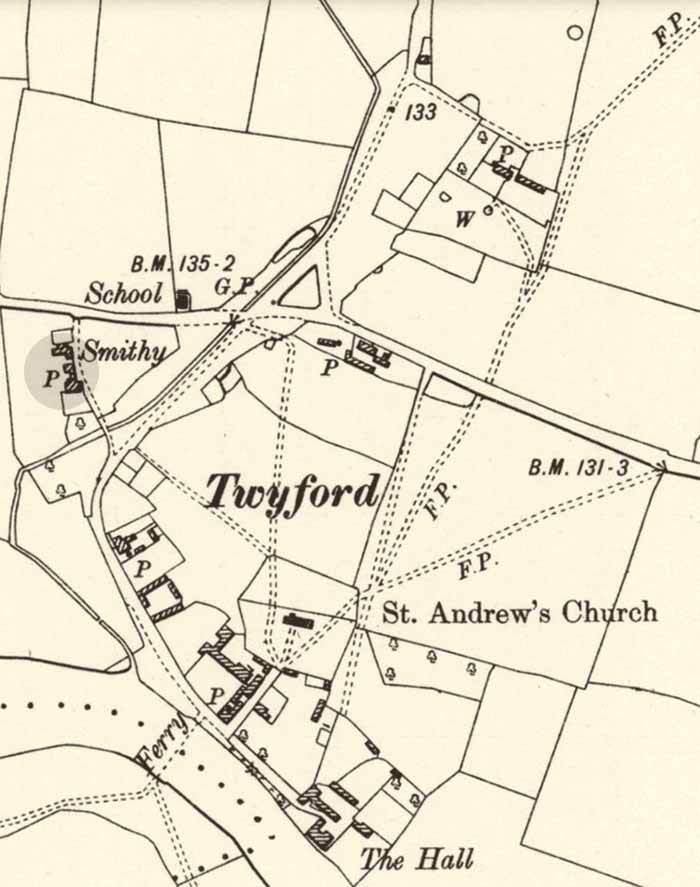 Location of John Coxs’ blacksmith shop, Twyford, which later became Smithy Farm
Location of John Coxs’ blacksmith shop, Twyford, which later became Smithy Farm
Two more children followed; John Edric, who was baptised on 25th February 1877, and Edith Ellen, who was baptised on 2nd January 1881. Both children were baptised at St Andrew’s Church, Twyford.
By April 1881, as well as working as a blacksmith, John was also farming 21 acres at Twyford, and their home became known as Smithy Farm. It appears that John grew crops on some of the land - in May 1905 he bought 3,000 cabbage plants for 15 shillings.
John and Sarah’s last child Ethel was baptised on 8th November 1885 at St Andrew’s Church, Twyford.
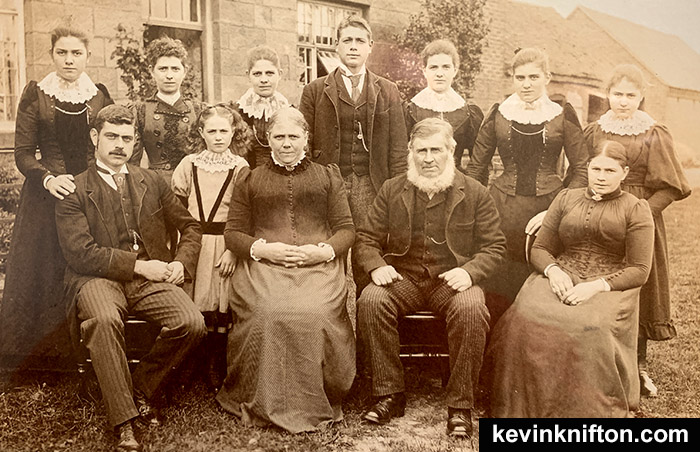 John Cox and family, outside Smithy Farm, Twyford, circa 1895
John Cox and family, outside Smithy Farm, Twyford, circa 1895Gertrude Alice, Herbert, Hannah Maria, Ethel, Florence Mary, Sarah, John Edric, John, Elizabeth, Mary Ann, Sarah Ann, Edith Ellen
When each of her daughters married, Sarah gave them a patchwork quilt which she made from scraps of men’s suiting fabric material, which came from her sister Susannah’s family in Huddersfield. At least one quilt was still being used in the 1950’s.
Kelly’s Directory of Derbyshire for 1895 records under the joint township, chapelry and parish of Twyford-with-Stenson, ‘Parish Clerk, John Cox’; and he is shown as the blacksmith for Twyford. John is again recorded as the parish clerk and blacksmith in the 1899 edition of the directory.
 Kelly’s 1895 Directory of Derbyshire | Twyford
Kelly’s 1895 Directory of Derbyshire | Twyford
A record of John’s daily work from 1895 survives in the form of a daybook. His main customers were the local farmers and on the cover is written ‘Farming Accts. Daybook’. This was later crossed out and beneath was written ‘Private Accs. of J. Cox TWYFORD’.
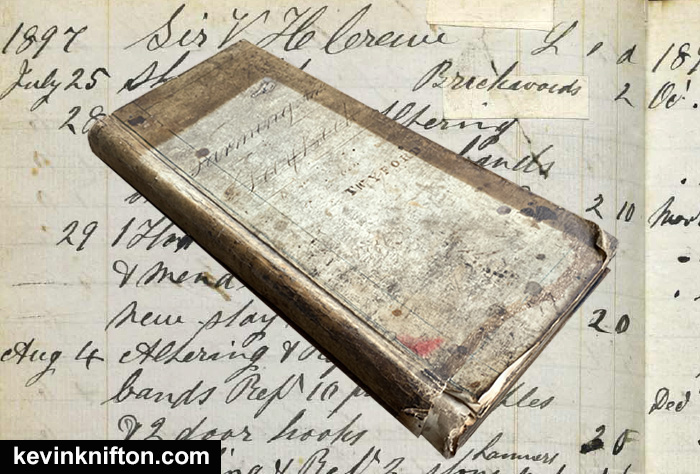 John Cox’s daybook from 1895
John Cox’s daybook from 1895
A page in the daybook was started for each local farmer on which John recorded the date, a description of work done, and the cost. When one page was full, a new page for the farmer was started further in the book to continue the account. From these entries, John prepared invoices for each farmer every 3 to 6 months, to which he applied a revenue stamp and signed his name and when payment was received. He also noted in the book when the account had been settled.
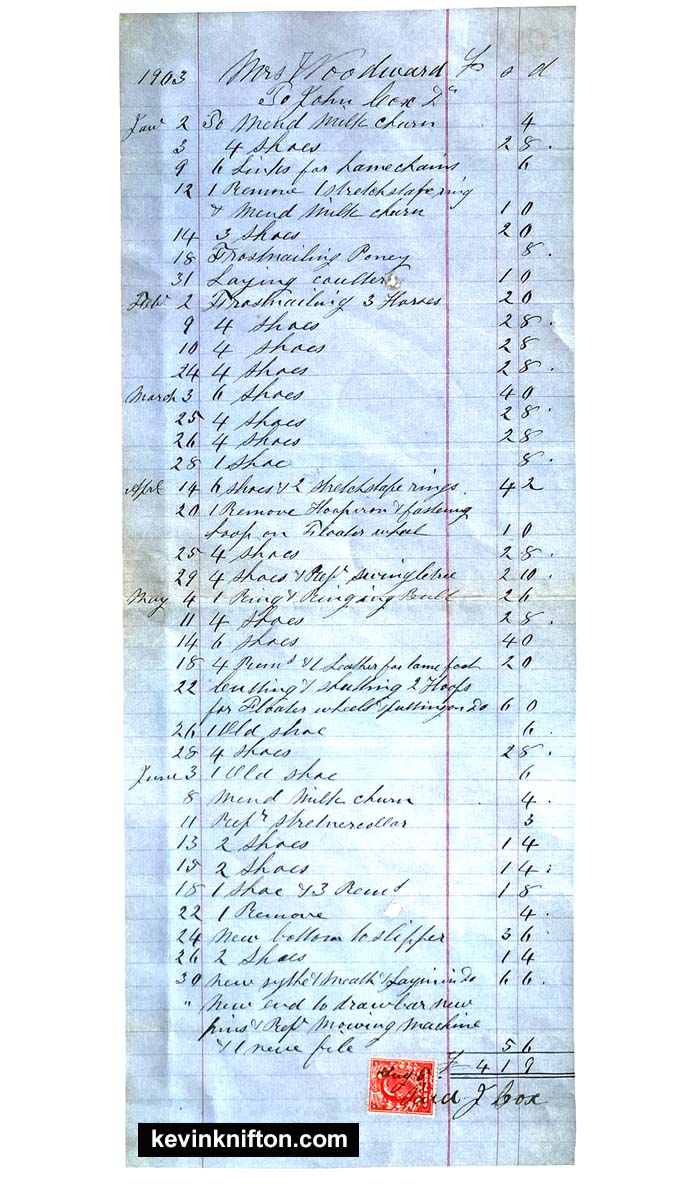 John Cox’s 1903 invoice to Mrs Woodward
John Cox’s 1903 invoice to Mrs Woodward
While much of John’s work was horse-shoeing - fitting new shoes, paring, frost nailing, temporarily fitting an old shoe when one had been lost, he spent most of his time repairing farm equipment. Examples include ‘mend plough rod’, ‘mend barrow wheel axle’, ‘repair mowing machine’, ‘repair plough gears’, ‘laying coulter’ and ‘ironwork for large harrow swingletree’. There was other blacksmiths work which the farmers required, including ‘mend milk churn’, ‘repair rabbit traps’, ‘fastener for oven door’, ‘mend bucket’, ‘mend shovel’, ‘mend pump handle’, and ‘making turnip knife’.
John also took on a few bigger jobs. In October 1896 he charged Mrs Smith for ‘time 6 days for myself and ½ day for J. Edric’ removing horsegear and various repairs; and in May 1897 Mrs Smith was again charged ‘time 1½ days pulling down iron fence’. In May 1899 Mr Edlin was charged 10 shillings as ‘time 1 day for myself & apprentice removing horsegear from Barrow to Potlocks and horse & cart’, and another 10 shillings for ‘time ½ day for 3 and horse & dray removing store for horsegear from Barrow to Potlocks’.
John also kept an account for ‘Sir V H Crewe’. His work for the Calke Estate didn’t involve horses but instead included supplying and repairing tools, such as picks, axes, and brick hammers, as well as providing shed latches and hooks. He also charged Sir Vauncey Harpur-Crewe’s account for repairs to property which belonged to the Calke Estate, including the ferryboat.
As well as his main customers from the farming community, John also did work for the local villagers, Twyford School, and St Andrew’s Church. This was recorded in a separate section in the daybook under the heading ‘Small Works’. These customers likely settled their bills within a few days, with John crossing through the work done when it had been paid for. For the school, John repaired fences, provided new keys and repaired locks, put up paraffin lamps, cleaned the yard, installed a bookcase, and delivered and put together desks. For the church he repaired the stay for a bell, clipped ivy, repaired windows, put up curtains, and regularly cleaned the path and ‘tombs’.
From December 1901, John’s son John Edric also began to make entries in the daybook. The last entry written in John’s hand was dated 22nd October 1906 when the smithy was handed over to his son.
One frequent visitor to Twyford was William Towle who was born at the smithy in 1849. William had moved to Derby in the early 1860’s, working at the Midland Hotel, and quickly progressed in the company. He became reknown for introducing a catering serivce on trains, took over the Midland Grand Hotel at St Pancras in the mid 1880’s, and established the largest hotel chain in Europe at the time. However, William never forgot his Twyford roots and would often return to visit, treating the Cox children on such occasions. A letter from William to Sarah Ann Cox dated 19th March 1898 thanks her for a present she gave to his daughter. William became Sir William Towle when he was knighted in 1920.
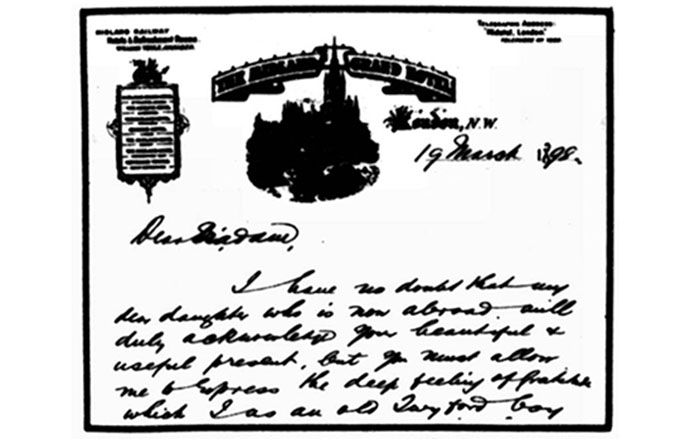
John and Sarah were still living at Twyford in April 1901. The census return shows that John was still working as a blacksmith and farmer, and notes that he was an employer.
In 1906 John and Sarah moved into Field View Cottage on Kytes Lane, Smalley, which they bought for £80. John had retired and several family members were already settled in the village; Edith had married George West who was the village blacksmith, Ethel had married Percy Wood and lived in the village, while Herbert was farming at Quarry Farm, which was next to the cottage.
In May 1911 John and Sarah Cox celebrated their golden wedding anniversary at their home in Smalley.
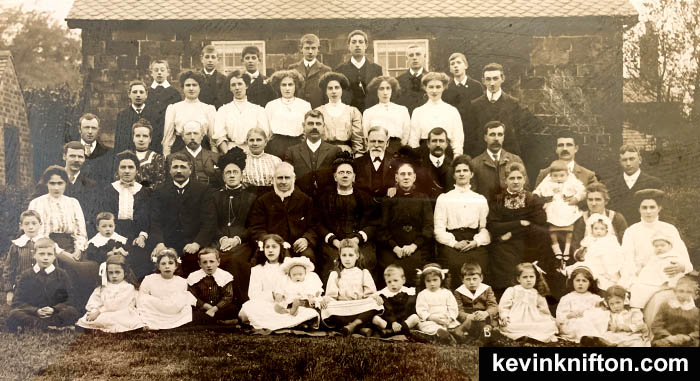 John and Sarah Cox with relatives, outside Field View Cottage, Smalley, May 1911
John and Sarah Cox with relatives, outside Field View Cottage, Smalley, May 1911
John and Sarah may have made frequent trips back to Twyford, since John is again listed as the parish clerk for Twyford in Kelly’s 1912 Directory of Derbyshire. On one occasion John's daughter Mary Ann walked with him from Twyford to Smalley with a herd of cows.
Sarah Cox died on 16th September 1912 aged 70, and was buried in the churchyard of St John the Baptist’s Church, Smalley, on 20th September.
On 16th August 1917, John and Sarah’s son Eddie died following a shooting accident.
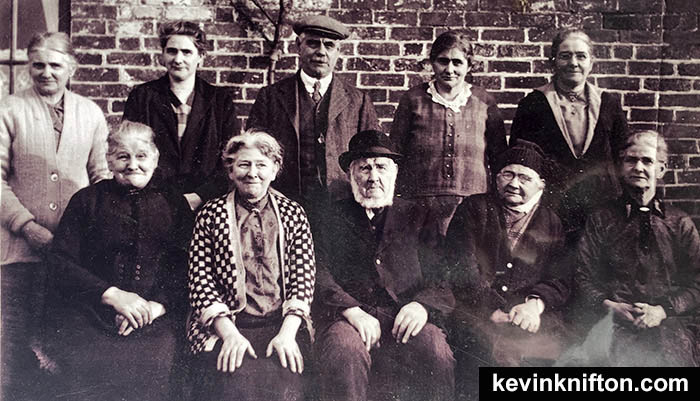 John Cox with his adult children at his 90th birthday celebration in 1926
John Cox with his adult children at his 90th birthday celebration in 1926Mary Ann Hudson, Ethel Wood, Edith West, Hannah Maria Sykes, Herbert Cox, John Cox, Florence Mary Blackshaw, Sarah Ann Holmes, Gertrude Alice Meakin, Elizabeth Wright
In September 1928 a local newspaper published an article about the Cox family of Twyford.

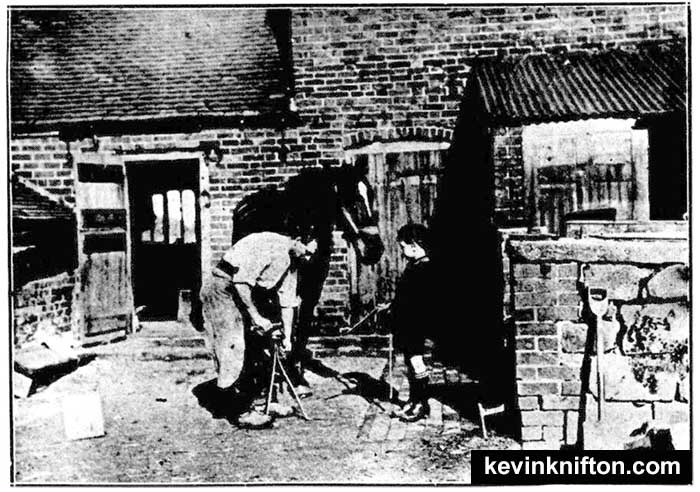 ‘FOUR GENERATIONS OF BLACKSMITHS is the proud record of the Cox family, of Twyford. Our picture below shows John Cox, aged 92, Herbert Cox, aged 65, John William Cox, aged 36, and William Eric Cox, aged 7. Above can be seen William Eric, keenly observing the method of shoeing a horse in the yard.’
‘FOUR GENERATIONS OF BLACKSMITHS is the proud record of the Cox family, of Twyford. Our picture below shows John Cox, aged 92, Herbert Cox, aged 65, John William Cox, aged 36, and William Eric Cox, aged 7. Above can be seen William Eric, keenly observing the method of shoeing a horse in the yard.’
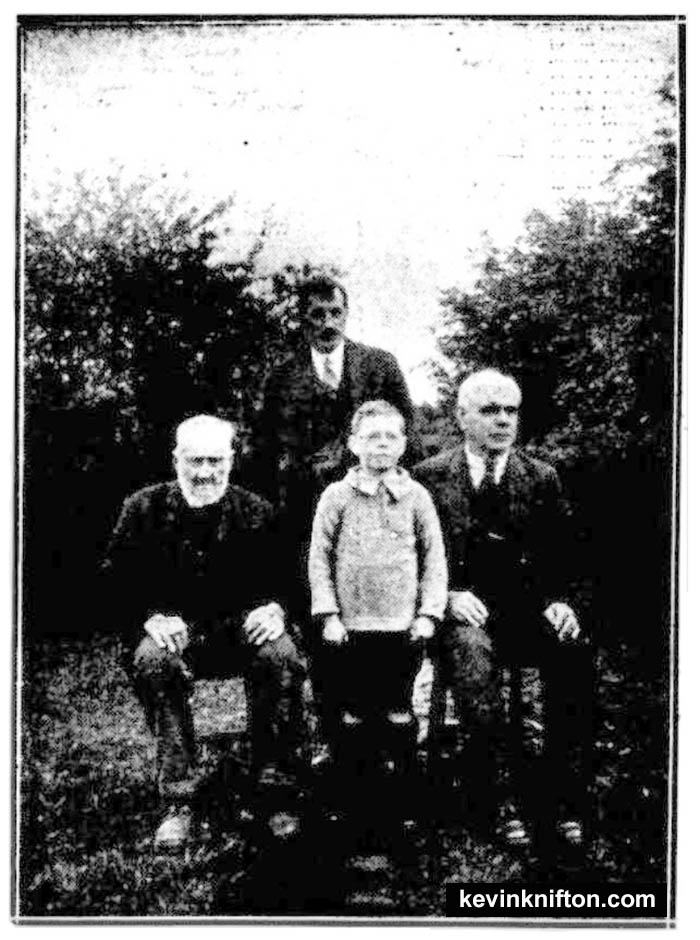
John often walked to visit his children and grandchildren in the village, usually carrying a basket, which would be full on his return home. Each Sunday he walked to Smalley Church with his Bible in hand to attend the morning service.
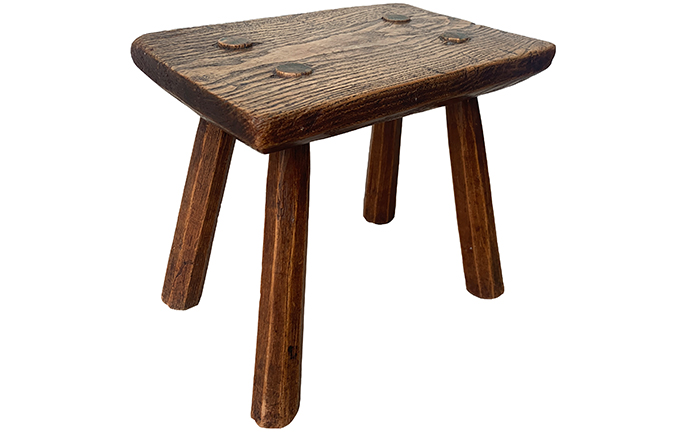 This stool was made by John Cox circa 1924 as a present for a child of the family who lived next door at Smalley.
This stool was made by John Cox circa 1924 as a present for a child of the family who lived next door at Smalley.
John continued to live in Smalley until 1929, when he moved back to Twyford to live at Green Farm with his married daughter Gertrude Meakin and her family.
John died on 16th January 1933 aged 96.

He was interred on 19th January in the churchyard of St John the Baptist’s Church, Smalley.
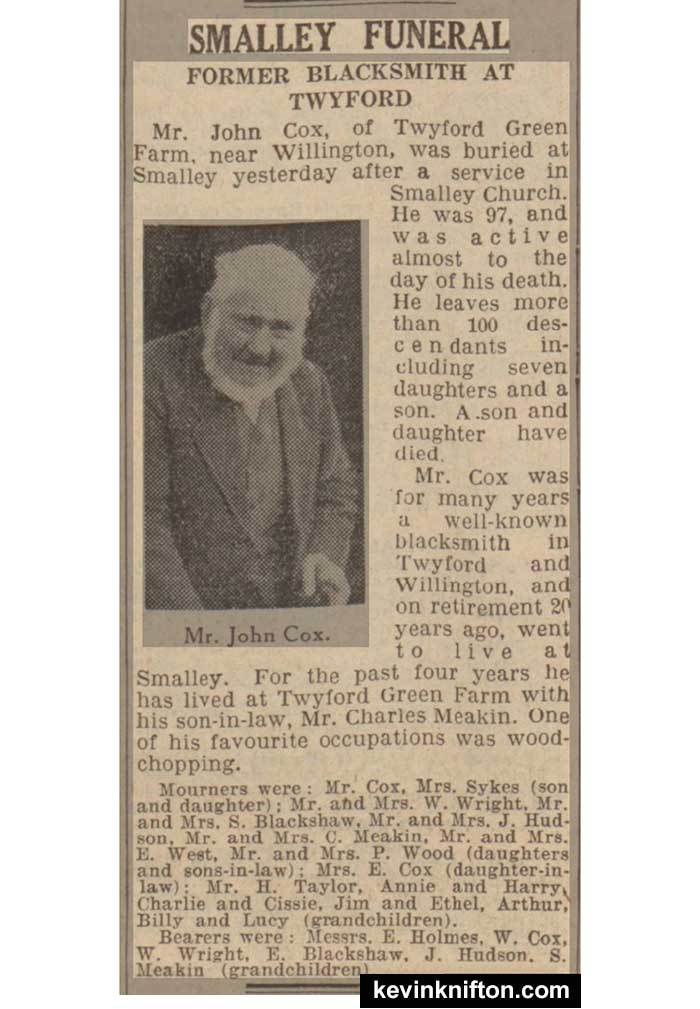
In his Will, written on 9th May 1930, John bequeathed ‘my bureau free of duty to my daughter Gertrude Alice Meakin’. He appointed his son Herbert and son-in-law Charles Meakin as the executors and trustees of his Will, and directed that they sell all his other real and personal estate and divide the proceeds between his surviving eight children. The division was to be in equal shares with an adjustment to the amount to his son Herbert as ‘satisfaction of the debt of forty-pounds owing by him to me, unless such debt shall have been previously paid’.
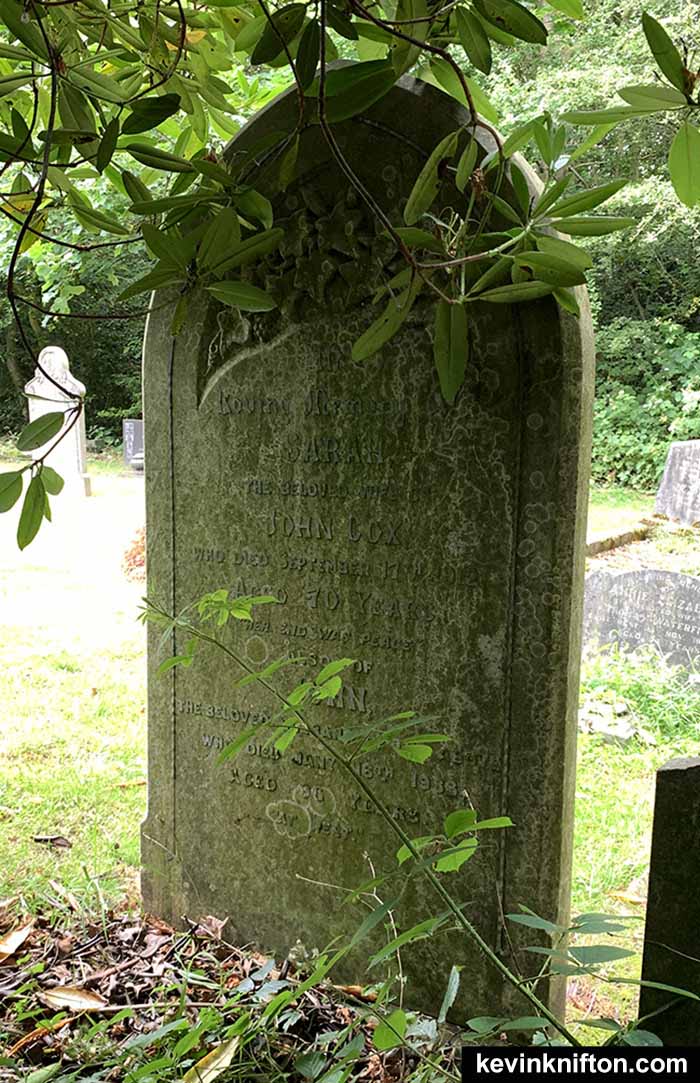 ‘IN LOVING MEMORY OF SARAH, THE BELOVED WIFE OF JOHN COX, WHO DIED SEPTEMBER 17TH 1912 AGED 70 YEARS. HER END WAS PEACE. ALSO JOHN COX, BELOVED HUSBAND OF THE ABOVE, WHO DIED JANUARY 16TH 1933 AGED 96 YEARS. AT REST.’
‘IN LOVING MEMORY OF SARAH, THE BELOVED WIFE OF JOHN COX, WHO DIED SEPTEMBER 17TH 1912 AGED 70 YEARS. HER END WAS PEACE. ALSO JOHN COX, BELOVED HUSBAND OF THE ABOVE, WHO DIED JANUARY 16TH 1933 AGED 96 YEARS. AT REST.’
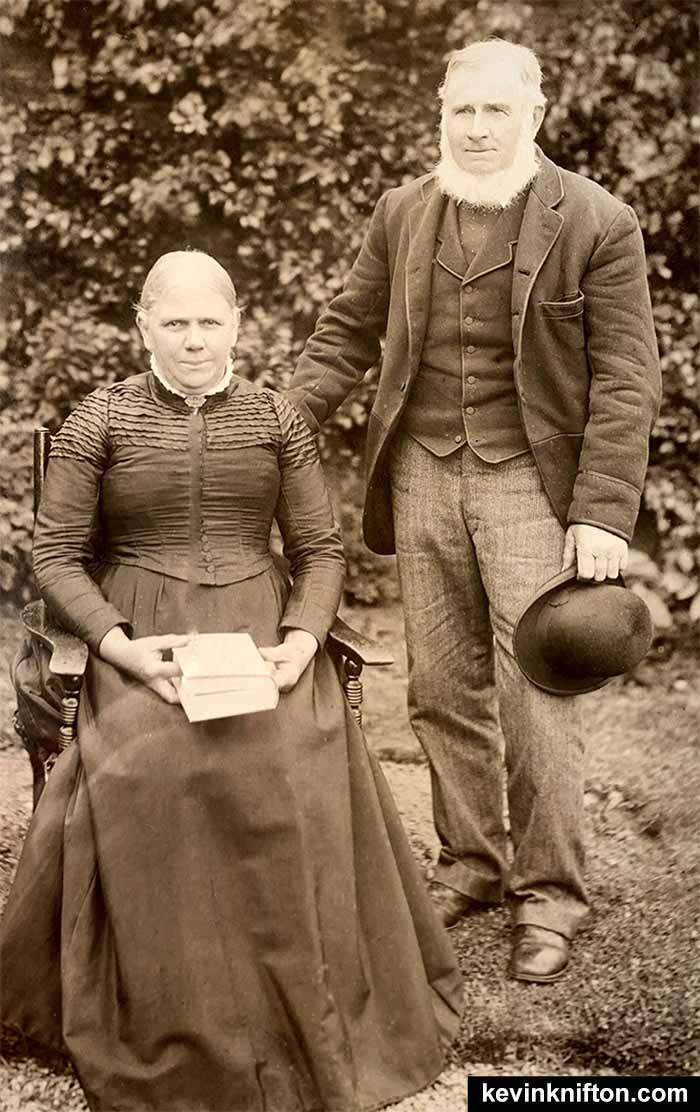
John and Sarah Cox were my great-great-grandparents.